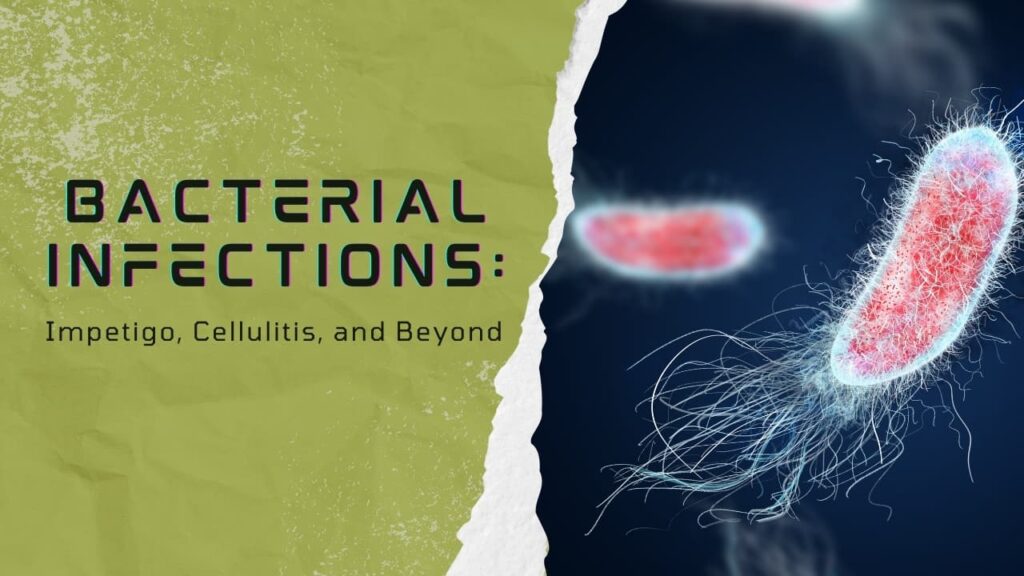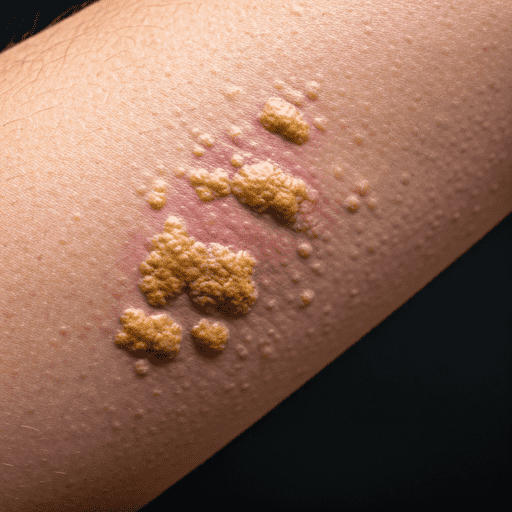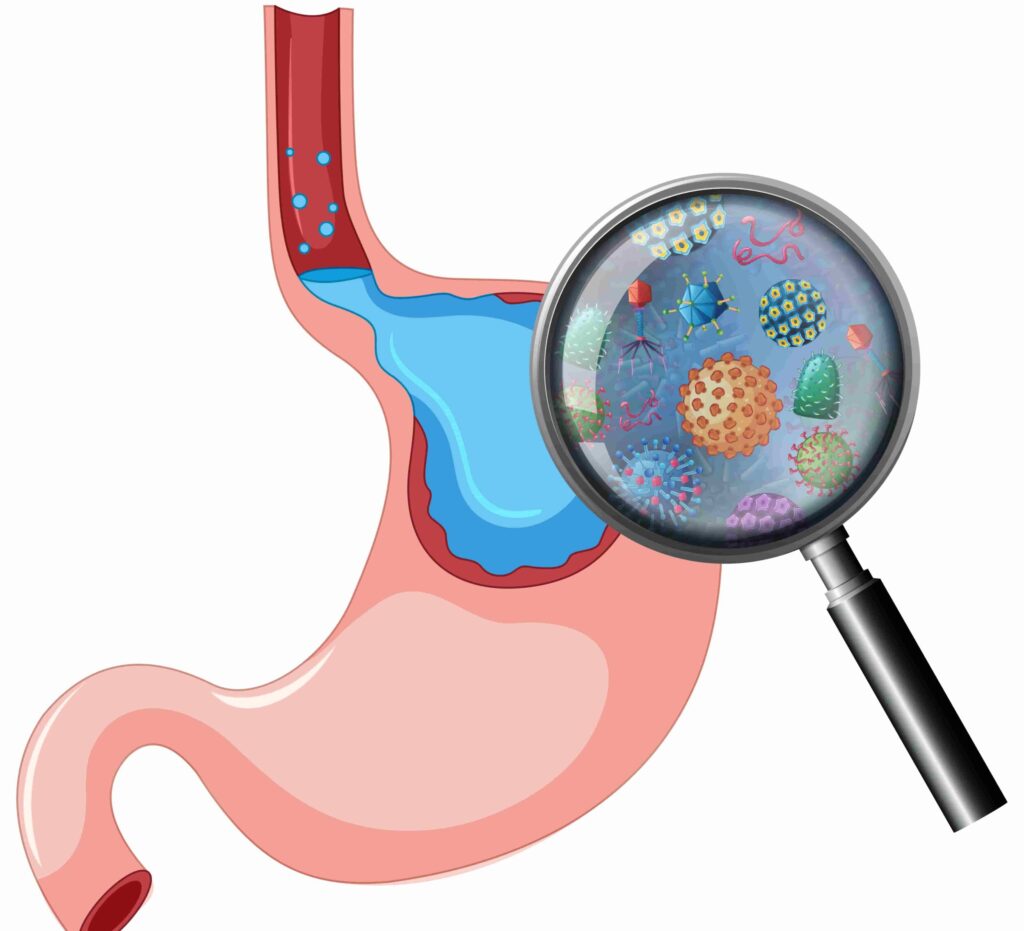Last updated on July 14th, 2025 at 11:32 am

Bacterial infections are considered to be among the major causes of diseases associated with the skin, varying with the extent. It runs from relatively simple irritations of the skin up to serious infection cases, capable of posing trouble when untreated. Some well known types include impetigo, cellulitis and all such afflictions causing aesthetic changes along with physiological change. Let’s know more about some of the most common types of bacterial skin infections, their symptoms, and treatments, and understand even better how to handle them and prevent such infections from happening.
What is a Bacterial Skin Infection?
A bacterial skin infection is when harmful bacteria invade the skin or even the tissues below. Some of these infections can happen because of a cut or abrasion through the skin, or an insect bite. Some can be superficial, while others can advance rapidly and cause a serious disease if not taken care of immediately. Examples of causative bacteria are Staphylococcus aureus and Streptococcus species.
Types of Bacterial Skin Infections
Impetigo: A Highly Contagious Condition
Impetigo is one of the most common bacterial skin infections in children. The disease appears as red sores or blisters, which eventually rupture and leave a yellowish-brown crust. Impetigo is caused mainly by Staphylococcus aureus or Streptococcus bacteria and can be transmitted directly through contact or by touching infected objects such as towels or toys. Early treatment is significant to avoid its spread to the rest of the body or to other people.

Symptoms of Impetigo
- Red sores typically around the nose and the mouth
- Blisters that break and leak with a yellowish liquid
- Crusting and scabbing over the infected places
- Itching and slight soreness
If you are looking for impetigo pictures so that you know how it looks, there are numerous websites that can provide pictures of bacterial infections of the skin to help you diagnose the condition. These images can be useful in helping you recognize the condition early on and seek medical attention.
Impetigo Treatment
Impetigo treatment often involves :
- Topical antibiotics : Applying an antibiotic ointment, such as mupirocin (Bactroban), can help clear the infection.
- Oral antibiotics : Oral antibiotics would be given in the serious cases to get rid of the bacteria.
- Good hygiene : Washing the infected area more frequently and not scratching reduces the spread.
Visit your healthcare provider for serious cases or spread of impetigo for prevention of complications. Treatments for impetigo are also available at pharmacies and your doctor.
Cellulitis : A Bacterial Infection Deeper Than the Skin
Cellulitis is another common infection caused by bacteria, this time affecting the deeper skin layers and tissues beneath them. It often manifests as a red, swollen area that feels warm to the touch and is usually painful. Cellulitis is more common on the lower legs, arms, and face, but it can happen anywhere on the body.
The most common bacteria responsible for cellulitis are Streptococcus and Staphylococcus aureus. Cellulitis, if not treated can lead to conditions like sepsis. So it is important to treat symptoms as soon as they arise.
Symptoms of Cellulitis
- Red, swollen, and painful skin
- Warmth in the affected area
- Fever and chills
- Blisters or abscesses in extreme cases
Pictures of cellulitis can be useful in providing a visual identification of this condition, since the color and swelling of the disease can look similar to so many other skin conditions. Comparing pictures of cellulitis with your symptoms is helpful in deciding whether you may need medical intervention.
Types of Cellulitis
Cellulitis can take on various degrees of seriousness and locations. Some classifications include:
- Periorbital cellulitis : Infection around the eye, which is more common to children.
- Facial cellulitis : Affecting the face; causes swelling and discomfort
- Cellulitis of the leg : Common in patients suffering from diabetes or poor circulation.
Cellulitis Home Treatment
If you have observed that you are developing cellulitis, some home treatments might help reduce inflammation and pain:
- Resting the area: Elevate the area to reduce swelling.
- Application of warm compress : The warm compress will reduce inflammation and soothe pain.
- Over-the-counter pain relievers : Ibuprofen or acetaminophen can be taken to help manage the pain and reduce fever.
However, cellulitis antibiotics usually are needed because this infection is caused by bacteria. The most common antibiotics for cellulitis are oral ones like dicloxacillin, clindamycin, or cephalexin. However, for serious cases or in those that have complications, intravenous antibiotics might be used.
Other Bacterial Skin Infections: Beyond Impetigo and Cellulitis
While impetigo and cellulitis are the two most common bacterial infections of the skin, many other types can affect the skin:
- Folliculitis : Bacterial infection of hair follicles, which is characterized by red bumps or pustules around the hair follicles.
- Abscesses : Pockets of pus formed under the skin due to infection, which often needs to be drained and may be treated with antibiotics.
- Boils : Large painful lumps under the skin caused by Staphylococcus bacteria.
Bacterial Infection in Stomach
Invasion of the stomach lining by harmful bacteria is known as a bacterial infection in the stomach. These infections often cause digestive issues. Helicobacter pylori, or H. pylori, is a bacteria that causes stomach infections. It can lead to diseases such as gastritis and ulcers, and can even cause stomach cancer if it develops further and no treatment is sought. Most people get infected with this bacteria through contaminated food or water or through direct contact with infected individuals.
The symptoms of the infection may vary, and in most cases, these include abdominal pain, bloating, nausea, and loss of appetite, plus vomiting. In more critical cases, ulcers formed due to infection may even lead to bleeding, black stools, or severe abdominal cramps.
Treatment for a bacterial infection of the stomach generally takes the form of an array of antibiotics to eradicate bacteria and proton pump inhibitors in order to reduce acid that may be causing ulcers and promote healing in the stomach lining. Completion of the full course of antibiotics, such as Nole Tablet, must be ensured to clear all infection.
Most of the infections in the stomach are treatable with drugs, but if left untreated, it may lead to complications like chronic gastritis or even gastric cancer. Preventing this infection is all about good hygiene, which is washing hands frequently and not taking contaminated food or water.
If you suspect that your stomach is infected by a bacterium, seek medical advice for diagnosis and appropriate treatment.

How to Prevent Bacterial Skin Infections
Preventing bacterial skin infections is done through proper care of hygiene and the skin. Here are some few tips:
- Frequent washing of hands : Hand hygiene will reduce the transfer of bacteria to the skin.
- Covering of wounds : All cuts and abrasions should be covered by a clean bandage so that no bacteria can penetrate.
- Avoid close contact with infected persons : Since the bacterial infection such as impetigo can easily spread, close contact with others should be avoided while the person is infected.
- Good skincare habits : Moisturizing regularly and avoiding irritants keep the skin healthy and less prone to infection.
Conclusion
Bacterial infections of the skin, including impetigo, cellulitis, and others, can range from mild to severe; however, with early detection and proper treatment, most can be controlled. Seek information and take an impetigo treatment to learn about the symptoms of cellulitis, causes of the infection, and know the preventive measures that keep your skin safe. Whether it is on your skin or elsewhere in your body, if you suspect there may be a bacterial infection you need to get in contact with a health professional, so you receive proper treatment and care. Always remember that bacterial infection pictures and photos of bacterial skin infections can help identify the condition, but diagnosis and treatment should be left to medical experts.
Staying informed and practicing good hygiene can reduce the risk of these infections and promote faster recovery when they occur.
FAQs Bacterial Infections: Impetigo, Cellulitis, and Beyond
1. What is impetigo and how is it treated?
Impetigo is a highly contagious bacterial skin infection that causes red sores, usually around the nose and mouth. Treatment involves topical antibiotics like mupirocin, or oral antibiotics for more severe cases. Maintaining good hygiene and avoiding close contact with others helps prevent its spread.
2. How can cellulitis be treated at home?
Mild cellulitis can be managed at home by elevating the affected area and using warm compresses to reduce swelling and discomfort. However, antibiotics are necessary to treat the infection, so consulting a doctor is important for proper treatment.
3. What are the common symptoms of bacterial skin infections?
The common symptoms of bacterial infections of the skin include redness, swelling, pain, warmth in the affected area, and sometimes fever. Impetigo causes blisters and crusting, whereas cellulitis leads to significant swelling and discomfort. Prompt treatment is essential to avoid complications.
Related Links :
- Chicken Pox Treatment
- Home Remedies for Fungal Infections
- Preventing Skin Infections: Tips for Healthy Skin
- Best Creams for fungal infection in private area